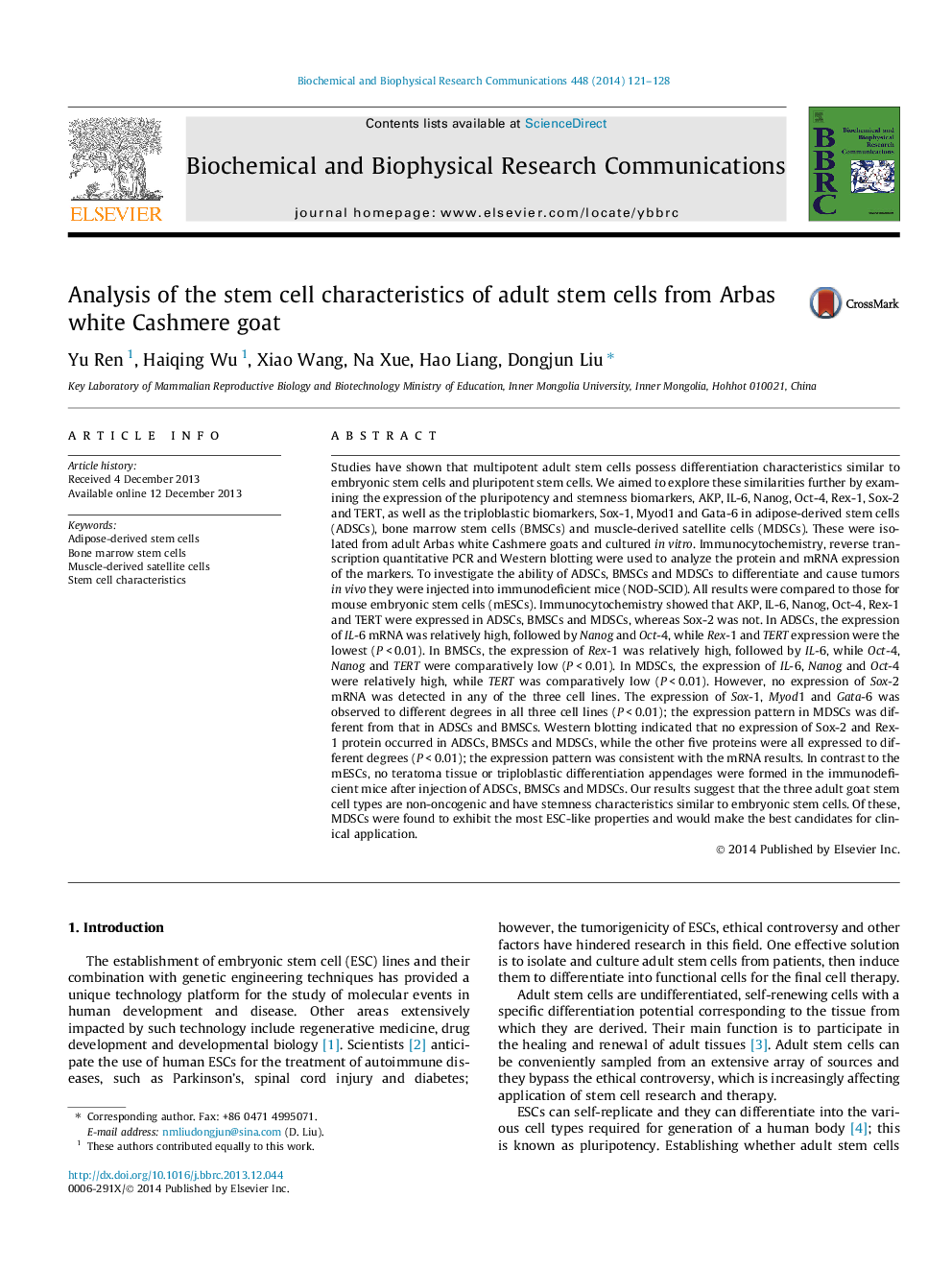| Article ID | Journal | Published Year | Pages | File Type |
|---|---|---|---|---|
| 10755122 | Biochemical and Biophysical Research Communications | 2014 | 8 Pages |
Abstract
Studies have shown that multipotent adult stem cells possess differentiation characteristics similar to embryonic stem cells and pluripotent stem cells. We aimed to explore these similarities further by examining the expression of the pluripotency and stemness biomarkers, AKP, IL-6, Nanog, Oct-4, Rex-1, Sox-2 and TERT, as well as the triploblastic biomarkers, Sox-1, Myod1 and Gata-6 in adipose-derived stem cells (ADSCs), bone marrow stem cells (BMSCs) and muscle-derived satellite cells (MDSCs). These were isolated from adult Arbas white Cashmere goats and cultured in vitro. Immunocytochemistry, reverse transcription quantitative PCR and Western blotting were used to analyze the protein and mRNA expression of the markers. To investigate the ability of ADSCs, BMSCs and MDSCs to differentiate and cause tumors in vivo they were injected into immunodeficient mice (NOD-SCID). All results were compared to those for mouse embryonic stem cells (mESCs). Immunocytochemistry showed that AKP, IL-6, Nanog, Oct-4, Rex-1 and TERT were expressed in ADSCs, BMSCs and MDSCs, whereas Sox-2 was not. In ADSCs, the expression of IL-6 mRNA was relatively high, followed by Nanog and Oct-4, while Rex-1 and TERT expression were the lowest (PÂ <Â 0.01). In BMSCs, the expression of Rex-1 was relatively high, followed by IL-6, while Oct-4, Nanog and TERT were comparatively low (PÂ <Â 0.01). In MDSCs, the expression of IL-6, Nanog and Oct-4 were relatively high, while TERT was comparatively low (PÂ <Â 0.01). However, no expression of Sox-2 mRNA was detected in any of the three cell lines. The expression of Sox-1, Myod1 and Gata-6 was observed to different degrees in all three cell lines (PÂ <Â 0.01); the expression pattern in MDSCs was different from that in ADSCs and BMSCs. Western blotting indicated that no expression of Sox-2 and Rex-1 protein occurred in ADSCs, BMSCs and MDSCs, while the other five proteins were all expressed to different degrees (PÂ <Â 0.01); the expression pattern was consistent with the mRNA results. In contrast to the mESCs, no teratoma tissue or triploblastic differentiation appendages were formed in the immunodeficient mice after injection of ADSCs, BMSCs and MDSCs. Our results suggest that the three adult goat stem cell types are non-oncogenic and have stemness characteristics similar to embryonic stem cells. Of these, MDSCs were found to exhibit the most ESC-like properties and would make the best candidates for clinical application.
Related Topics
Life Sciences
Biochemistry, Genetics and Molecular Biology
Biochemistry
Authors
Yu Ren, Haiqing Wu, Xiao Wang, Na Xue, Hao Liang, Dongjun Liu,
